 |
|
3 LPs
- 6.35596 FK - (p) 1982
|
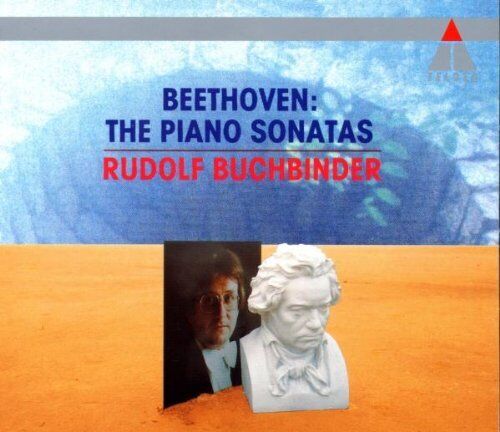 |
| 8 LCDs -
9031-71719-2 - (c) 1990 |
|
KLAVIERSONATEN
- Volume 4
|
|
|
|
|
|
|
|
| Ludwig van
BEETHOVEN (1750-1827) |
Klaviersonate
Nr. 9 E-dur, Op. 14 Nr. 1 - Der
Baronin Josefa von Braun gewidmet
(Komponiert um 1798/99)
|
|
11' 28" |
|
|
-
Allegro |
5' 43" |
|
A1
|
|
-
Allegretto |
2' 55" |
|
A2
|
|
-
Rondo: Allegretto comodo |
3' 00" |
|
A3
|
|
Klaviersonate
Nr. 10 G-dur, Op. 14 Nr. 2 - Der
Baronin Josefa von Braun
gewidmet (Komponiert
um 1798/99) |
|
14' 20" |
|
|
-
Allegro |
6' 33" |
|
A4
|
|
-
Andante |
4' 37" |
|
A5
|
|
-
Scherzo: Allegro assai
|
3' 10" |
|
A6
|
|
Klaviersonate
Nr. 8 c-moll, Op. 13
"Pathétique" - Dem Fürsten Carl
von Lichnowsky gewidmet
(Komponiert 1798/99)
|
|
18' 48" |
|
|
-
Grave · Allegro di molto e con brio
|
8' 45" |
|
B1
|
|
-
Adagio cantabile
|
5' 41" |
|
B2
|
|
-
Rondo: Allegro
|
4' 22" |
|
B3
|
|
Klaviersonate
Nr. 22 F-dur, Op. 54 -
(Komponiert 1804)
|
|
11' 03" |
|
|
-
In tempo di menuetto
|
5' 08" |
|
B4
|
|
-
Allegretto |
5' 55" |
|
B5
|
|
|
|
|
|
|
Klaviersonate
Nr. 13 Es-dur,
Op. 27 Nr. 1 "Sonata
quasi una Fantasia"
- Der Fürstin
Josephine von
Liechtenstein
gewidmet
(Komponiert
1800/01)
|
|
16' 21" |
|
|
-
Andante · Allegro |
5' 25" |
|
C1
|
|
-
Allegro molto e vivace |
1' 48" |
|
C2
|
|
-
Adagio con espressione |
3' 23" |
|
C3
|
|
-
Allegro vivace |
5' 45" |
|
C4
|
|
Klaviersonate
Nr. 24 Fis-dur,
Op. 78 "A Thérèse" -
Der Gräfin
Therese von
Brunswik gewidmet
(Komponiert 1809)
|
|
7' 32" |
|
|
-
Andante cantabile · Allegro ma non
troppo
|
4' 42" |
|
C5
|
|
-
Andante · Allegro |
2' 50" |
|
C6
|
|
Klaviersonate
Nr. 30 E-dur, Op. 109 - Maximiliane von
Brentano
gewidmet
(Komponiert
1820)
|
|
18' 54" |
|
|
-
Vivace, ma non troppo
|
3' 59" |
|
D1
|
|
-
Prestissimo |
2' 16" |
|
D2
|
|
-
Gesangvoll, mit innigster
Empfindung: Andante molto cantabile
ed espressivo |
12' 39" |
|
D3
|
|
|
|
|
|
|
Klaviersonate
Nr. 28 A-dur, Op. 101 - Der Freiin
Dorothea von
Ertmann
gewidmet
(Komponiert
1816)
|
|
20' 01" |
|
|
-
Etwas lebhaft und mit der innigsten
Empfindung: Allegretto ma non troppo
|
4' 05" |
|
E1
|
|
-
Lebhaft · Marschmäßig: Vivace alla
Marcia
|
5' 50" |
|
E2
|
|
-
Langsam und sehnsuchtswoll: adagio,
ma non troppo, con affetto |
Geschwinde, doch nicht zu sehr, und
mit Entschlossenheit: Allegro
|
10' 06" |
|
E3
|
|
Klaviersonate
Nr. 29 B-dur, Op. 106 "Große
Sonate für das Hammerklavier" - Dem
Erzherzog Rudolph von Österreich
gewidmet (Komponiert 1817/18)
|
|
45' 58" |
|
|
-
Allegro |
10' 28" |
|
E4
|
|
-
Scherzo: Assai vivace
|
2' 16" |
|
E5
|
|
-
Adagio sostenuto: Appassionato e con
molto sentimento
|
20' 54" |
|
F1
|
|
-
Largo · Allegro · Allegro risoluto
(Fuga a tre voci, con alcune
licenze)
|
12' 26" |
|
F2
|
|
|
|
|
Rudolf BUCHBINDER,
Klavier (Steinway-Flügel)
|
|
|
|
|
|
Luogo
e data di registrazione |
|
-
|
|
|
Original
Editions |
|
Telefunken
| 6.35596 FK | 3 LPs | LC 0366 |
durata: 55' 39" · 42' 47" · 65'
59" | (p) 1982 | ANA | stereo
|
|
|
Edizione CD
|
|
Teldec
| 9031-71719-2 | 8 CDs | LC
3706 | (c)
1990 | DDD/DMM | stereo |
Klaviersonaten Nr. 1-32
Teldec | 8.43477 ZK | 1 CD | LC
3706 | (c)
1987 | DDD/DMM | stereo |
Klaviersonaten Nr. 9, 10, 22
Teldec
| 8.42913 ZK | 1 CD | LC 3706 |
(c)
1983 | DDD/DMM | stereo |
Klaviersonate Nr. 8
Teldec |
8.43206 ZK | 1 CD | LC 3706
| (c)
1985 | DDD/DMM | stereo |
Klaviersonate Nr. 13
Teldec
| 8.43478 ZK | 1 CD
| LC 3706 | (c)
1987 | DDD/DMM |
stereo |
Klaviersonate Nr. 24
Teldec
| 8.43027 ZK |
1 CD | LC 3706
| (c)
1984 | DDD/DMM
| stereo |
Klaviersonate
Nr. 30
Teldec
| 8.42761 ZK |
1 CD | LC 3706
| (c)
1984 | DDD/DMM
| stereo |
Klaviersonaten
Nr. 28, 29
|
|
|
Executive
Producer |
|
-
|
|
|
Recording
Engineer |
|
-
|
|
|
Cover |
|
Ludwig
van Beethoven, Gemälde von J. W.
Mähler, 1815
|
|
|
Note |
|
- |
|
|
|
|
|
BUCHBINDER
BEETHOVEN
32 KLAVIERSONATEN
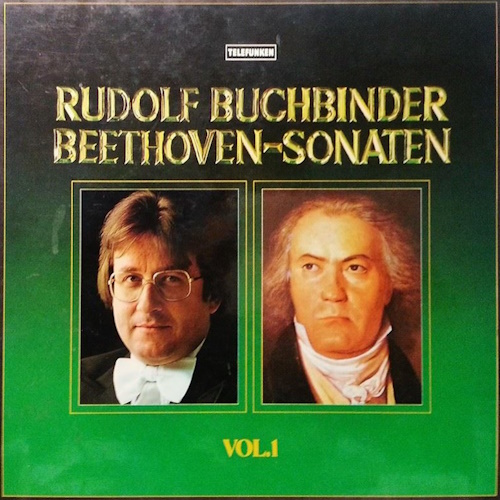
3 LPs - 6.35472 FK - (p) 1980
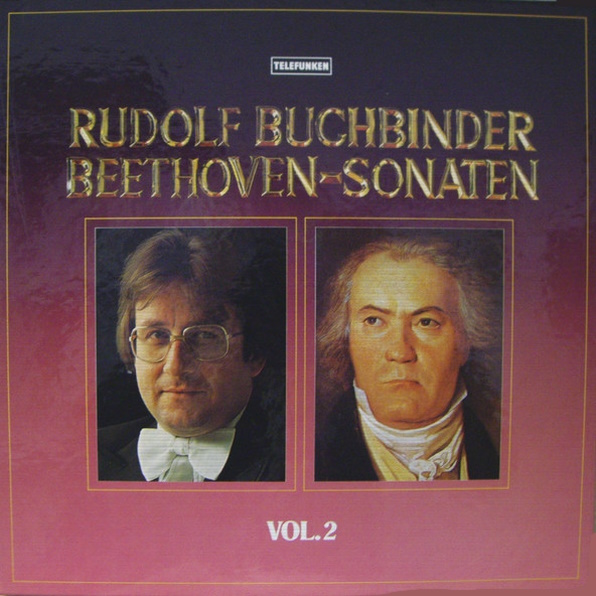
2
LPs - 6.35490 FK - (p) 1981
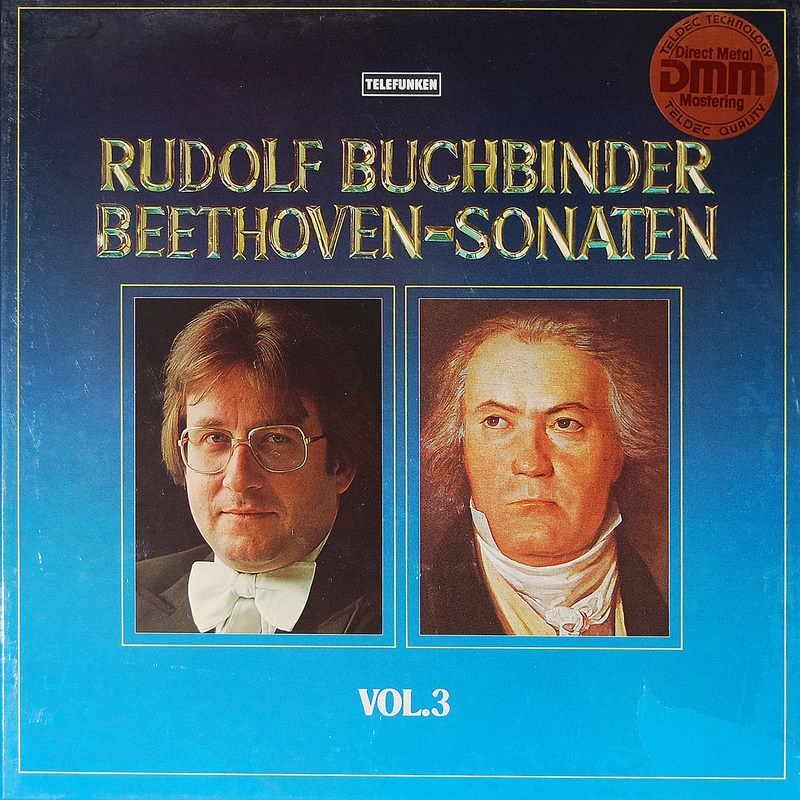
3 LPs -
6,35581 FK - (p) 1982
3 LPs -
6.35596 FK - (p) 1982 |
RE-RELEASE
ON
COMPACT DISC (DMM)
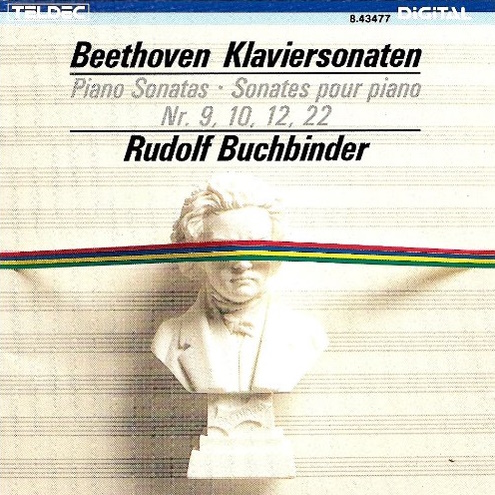
1 CD - 8.43477 ZK - (c) 1987
(Nr.9,10,22)
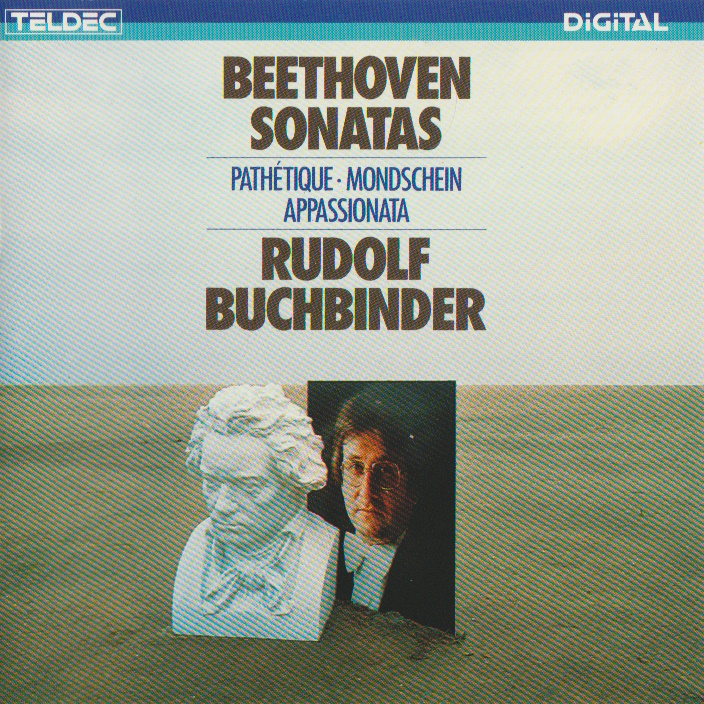 1 CD - 8.42913 ZK
- (c) 1983 (Nr.8)
1 CD - 8.42913 ZK
- (c) 1983 (Nr.8)

1 CD -
8.43206 ZK - (c) 1985
(Nr.13)
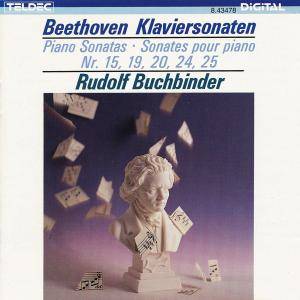
1 CD -
8.43478 ZK - (c) 1987
(Nr.24)
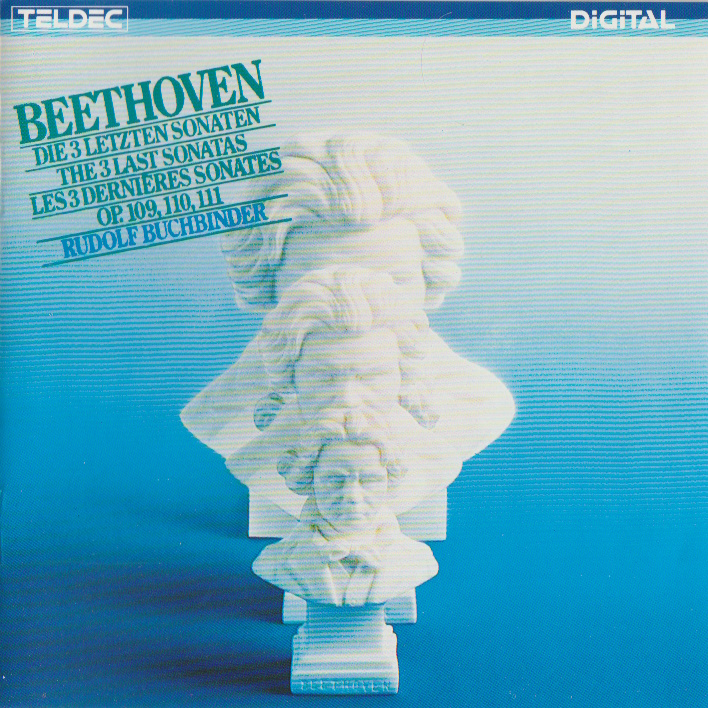
1 CD -
8.43027 ZK - (c) 1984
(Nr.30)
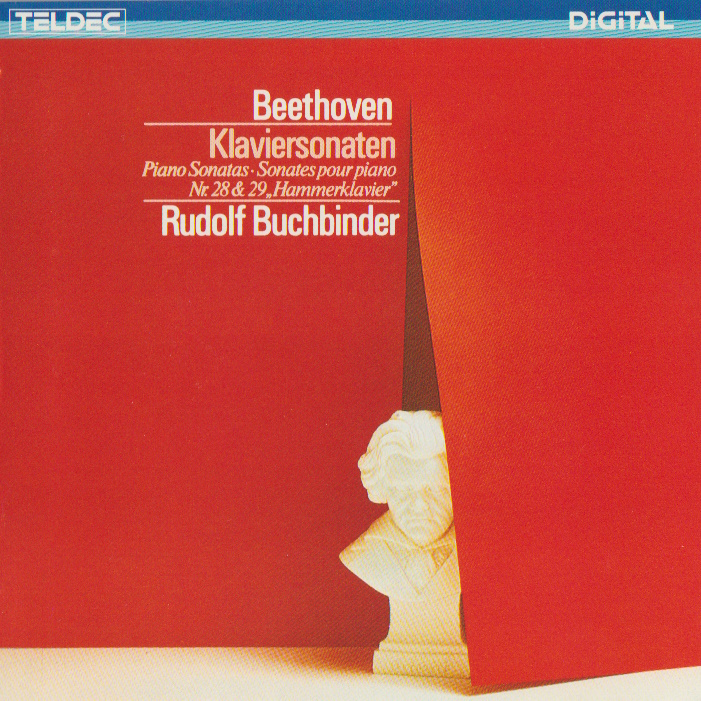
1 CD - 8.42761 ZK - (c) 1984
(Nr.28,29)
|
Piano
Sonata Nr. 8, Op. 13
"Pathétique"
Unfortunately for its
interpreters, the ”Pathctique" is
one of Beethoven's sonatas which
are all too well known, one might
almost say ”played to death”. As
early as 1842 Carl Czerny stated
in the comments to his edition
published in that year that this
sonata was easier to master than
all its predecessors, and
consequently had always been a
particular favourite. To this day
students who are looking for a
titanic, “tragic” Beethoven first
movement to perform with
thunderous panache choose this
work. The ”Grande Sonatc
pathétiquc”, as it was entitled
when published in 1799, is the
only sonata for piano to which
Beethoven himself gave a
descriptive name, as opposed to
the apocryphal ”Appassionata”,
”Pastorale” etc. The reviewer of
the Leipzig ”Allgemeine
Musikalische Zeitung” wrote rather
restrainedly of the first edition:
“The only objection that the
critic might raise against someone
like Beethoven... is that the
sonata’s theme strikes one as too
reminiscent, though the critic is
unable to say of what; but
certainly the idea is not a new
one." Thus, for example, the
”grave” introduction to the first
movement with its dotted rhythm
and sequence of diminished seventh
chords sounds operatic, and both
the first and second movement
contain reminiscences of Mozart’s
C minor sonata K 457 written 15
years previously. On the other
hand, there is scarcely any model
for the manner in which Beethoven
quotes a characteristically varied
excerpt from the introduction at
the beginning of the development,
then combines the main theme and
the melody of the ”grave” into the
subiect of the development and, at
the end of the movement,
juxtaposes with drastic brevity
these two thematic elements in
their original form. Again, there
are hardly any models for the
frantic urgency which gives the
first movement its special
character; here the broken octaves
in quavers in the left hand which
in the past - as in the Mozart
sonata mentioned above - were
treated more as cosy, stereotyped
accompanying figures are
transformed into the muffled drum
roll of an imaginary orchestra.
This sonata is dedicated, as were
the piano trios op. 1 which
preceded it and later also the
sonata op. 26, to Prince Carl
Lichnowsky, probably Beethoven's
most eminent patron, of whom he
was to say in 1805: “He is truly
one of my most faithful friends
and promoters of my art -
something fairly unusual in that
class.”
Piano
Sonatas Nr. 9 and 10, Op. 14,
Nos.1 and 2
These two sonatas of op. 14,
composed at the same time as the
”Pathétique”, were also
published in 1799. They are in
the small-scale three movement
form, cheerful, uncomplicated
and technically undemanding;
Czerny described the first
movement of the sonata in G as
an exceptionally charming and
lighthearted composition. The
fact that they were
contemporaneous with the
”Pathétique” proves yet again
that any attempt to interpret a
work as the reflection of the
personal circumstances of its
composer at the time when it was
created is fraught with dangers.
If the ”Pathétique” is to be
understood as a tragic revolt
against Beethoven's incipient
deafness, how can this be
reconciled with the calm
serenity of op. 14, written at
the same time? Style in music
simply cannot always be related
to the frame of mind of its
composer, for all that bad
exegetical literature still
makes this claim; like form and
genus in music, it has its own
tradition. Conceivably the
reduced rechnical problems (the
two even easier sonatinas of op.
49, written in 1796, were, after
all, not published until 1805)
are to be understood as a
compliment to the dedicatee, the
Baroness Braun, who is not known
to have been a particularly
distinguished pianist. Her
husband was, however, at that
time deputy director of Vienna's
two imperial court theatres, and
this may throw some light on the
purpose of the dedication. Soon
afterwards (180l-02) Beethoven
arranged op. 14, No. 1 for
string quartet, writing full of
pride to the publisher ”I know
that nobody else can follow in
my footsteps as easily as I
can.”
Piano
Sonata Nr. 13, Op. 27 Nr. 1
"Sonata quasi una fantasia"
In three piano sonatas written
in rapid succession in 1800-01
Beethoven departed, for the
first time, from the
traditional sonata form. Op.
26 begins with an "Andante con
variazioni”, the second
movement is a scherzo, and the
third replaces the slow
movement with the famous
funeral march. In the sonatas
of op. 27, both described as
being “quasi una fantasia”,
the first movements are quite
freely structured, evidently
as a follow-up to op. 26. In
No. l it almost gives the
impression of a free
improvisation (as the word
“fantasia” implies) on a
short, songlike phrase vaguely
suggesting a set of
variations. The allegro middle
section provides a contrast
both in key (C as against E
flat) and metre, although it
is based on the harmonic
scheme of the opening section.
Unlike op. 27, No. 2, however,
there is no break between the
movements, as Czerny so
rightly remarked, this sonata
is really a fantasia, and all
its movements merely serve to
create a single unified piece.
The second movement is a
scherzo entirely in crotchets,
except that in the last repeat
the two hands are a quaver
apart. The third (adagio) is
surprisingly brief - three
sections of eight bars each,
which seems somewhat
inappropriate to its expansive
theme. Finally the last and,
as in op. 27, No. 2, the
longest movement is the most
formally complete in itself: a
large-scale rondo in six
sections with sonata elements,
almost entirely in loose
two-part writing, frequently
contrapuntal, and altogether
clearly reminiscent of the
last movement of op. 26. Quite
unexpectedly the firt bars of
the Adagio turn up again just
before the short presto coda,
further evidence of the free
fantasia-like form, but also
an anticipation of the
"flash-back” technique of later
works such as sonata op. 101,
where the opening of the work
is quoted before the final
fugue.
Piano Sonata Nr. 22, Op.
54
This short work, written in 1804,
contrasts strangely with the two
great, quasi-symphonic sonatas
opp. 53 and 57, between which it
is placed chronologically. In some
respects it follows on the
experiments of opp. 26 and 27,
since neither of its two movements
is in true sonata form. The first
movement consists of two sharply
contrasting elements: a short
exposition, strongly reminiscent
of the minuet style of a past age,
almost a stylistic quotation;
Czerny rightly referred to its
old-fashioned character, and this
is borne out by the anachronistic
marking "in tempo d’un Menuetto”
in place of the more usual ”in
tempo di Menuetto”. The longish
middle section is most certainly
not a trio, but more like a
rumbustious orchestral scherzo
with its fierce sforzato accents
going against the grain. No less
strange is the second movement.
Although the pattern of its motion
- incessant semiquaver figuration
in 2/4 time - is the same as that
of the last movements of opp. 26
and 27, No. 1, its form cannot be
labelled. instead, as in a
kaleidoscope, new configurations
constantly come into existence,
wandering off into the most
distant keys imaginable, all
arising out of a minute seminal
phrase, the broken chords of the
first bar. This movement is a fine
example of Beethoven’s masterly
economy of material. Once again,
contemporary critics did not know
what to make of such
“experimental” music; a reviewer
of the first edition, though he
could not fail to recognise its
original inspiration and
unmistakeably mature harmonic art,
went on to say that unfortunately
it was again full of a strange
waywardness. Even Beethoven’s
admirer Wilhelm von Lenz,
convinced that this two-movement
sonata was incomplete, wrote, as
late as the 1850s: “We have yet to
meet anyone who has found the
torso of op. 54 at all to his
liking.”
Piano Sonata Nr. 24, Op. 78 "A
Thérèse"
This sonata and the sonatina op.
79, both dating from 1809, both
very short, are in the nature of
light relief overshadowed by
greater works: the Choral Fantasia
op. 80, the Emperor Concerto, the
string quartet op. 75 and the
incidental music to ”Egmont”. Op.
78 is dedicated to Countess
Therese von Brunsvik, to whom
Beethoven was deeply attached. (He
was also a close friend of her
brother Franz, the dedicatee of
the ”Appassionata” and the
Fantasia op. 77; he may well have
had a love affair with her sister
Josephine, the widow of Count
Deym.) The short motto which
launches the sonata, four bars
with the.significant marking
“adagio cantabile”, almost gives
the impression that it reflects a
romantic dedication. (The normally
notoriously matter-of-fact Hans
von Bülow once went so far as to
say that if Beethoven had composed
nothing except for these four
bars, he would still have been
immortal.) Though the motto has no
further thematic role to play in
the movement, the songlike
beginning of the first subject
sounds like a continuation of this
adagio introduction; indeed,
”cantabile” applies without a
doubt to the whole movement, which
presages the importance that this
expression mark was to assume in
the later sonatas, starting with
op. 90. The second movement, a
lively rondo based once again on
the opening bars of the first
movement, is, according to Czerny,
quite difficult because it is
sometimes awkward: full of
two-note arpeggios, rapid hand
changes in the figuration, as later
found in Tchaikowsky, and all that
in the cumbersome key of F sharp,
which is unique in Beethoven's
piano music. Again according to
Czerny, Beethoven was proud of
this work: ”People are forever on
about the sonata in C sharp minor
{the ”Moonlight”, op. 27, No. 2);
I have certainly written better
than that. The sonata in F sharp
is a different thing altogether.
Piano
Sonata Nr. 28, Op. 101
With this sonata, completed in
1816. Beethoven's creative work
began to flow again after several
years of sluggish production,
not unconnected with the
political confusion of the
period. One of the most striking
innovations of his late period
style, which is generally
acknowledged as beginning with
op. 101, is an emphatic move
towards contrapuntal writing,
towards fugues, particularly in
his final movements (piano
sonatas opp. 101, 106, 110;
cello sonata op. 102, No. 2). In
op. 101 the finale, as in so many
others of his late works the
most weighty movement,
completely envelops the sonata
form in contrapuntal notions: in
the exposition all thematic
figurations are presented fugato,
the development and later, by
analogy, the coda begin with a
genuine four-part fugue on the
main subject in the tonic minor.
An adagio, highly expressive in
spite of being a mere twenty
bars, is headed ”langsam und
schnsuchtsvoll”, i.e. ”slow and
yearning”, (in op. 101 Beethoven
continued the practice started
with op. 90 of using German
headings, although he added
Italian markings.) It is
somewhat reminiscent of the
”Introduzione” in the Waldstein
sonata, which also ushers in the
tremendous final movement. In
between, before the ”attacca” of
the Finale, there is a brief
quotation from the first
movement, a device intended to
emphasise the cyclical unity of
the whole concept, which is
later encountered on several
occasions, notably in the Ninth
Symphony. The first movement is
lyrical and sensitive
throughout, really more in the
style of a central slow
movement, here the
differentiation of form and
theme which is inherent in the
sonata movement proper has all
but disappeared. (The
particular rhythm of the
movement, tied quavers on the
weak beat resulting in
syncopation, is later frequently
to be found in the works of
Schumann and Brahms.) Beethoven
described this sonata as very
difficult to perform; he
dedicated it to one of the most
accomplished pianists in Vienna,
the Baroness Ertmann ("Receive
What I have often intended for
you and which, I hope, will
prove my devotion both to you
and to your artistic talent”)
Both Reichardt and Mendelssohn
considered her interpretation of
his works to be perfection
itself, and Anton Schindler,
Beethoven's confident and
subsequently his biographer,
praised her in the following
terms: ”Her achievements were
simply unique. She sensed
intuitively even the most arcane
intentions in Beethoven's Works
with such certainty as though
they were written out and in
front of her very eyes."
Piano Sonata Nr. 29, Op. 106
"Hammerklavier"
This sonata, written in 1818, is
practically the only major work
of that year and the longest and
most difficult of all
Beethoven's piano sonatas; it
almost strikes one as a gateway
leading to the tremendous edifice
of the ”Missa Solemnis”, which
he started immediately
afterwards. (The epithet
”Hammerklavier” Sonata, derived
from the original title "Grand
Sonata for the Hammcr-Klavier”
has no significance other than
that in place of the customary
term ”pianoforte" he used the
equivalent German name, as he
did for example in op. 101.) The
publication of the sonata in
1819 was greeted with comments
such as these: ”Thus we can
observe, after only a few lines,
that this work docs not just
differ from the master's other
creations in its abundant and
vast imagination but that, by
virtue of the artistic
perfection of its unified
writing” (this refers to the
counterpoint of the fugue in the
last movement) “it appears to
mark a new period in Beethoven's
piano works.” This is his last
sonata in the grand,
four-movement structure, though
the largo which introduces the
finale almost achieves the status
of an independent movement,
thereby creating a roughly
symmetrical structure of five
movements. The longest movement,
the adagio, lies at the core,
with two shorter movements
(scherzo and largo) separating
it from the huge outer movements.
As in the "Waldstein" and
"Appassionata", the first
movement is of truly symphonic
proportions, abounding with
changing harmonies, furious
contrasts, extraordinary tonal
effects, exploiting the extreme
registers of the piano and
demanding a degree of virtuosity
that is not merely an end in
itself. By contrast there
follows a fleeting yet somehow
constrained scherzo and a
strange trio with colourless
broken triads leading to a wild
cadence, marked presto; after
the repeat of the scherzo there
is a coda with an oppressive
conflict between the last note,
the tonic B flat, and the
”wrong” B natural. The adagio,
marked ”appassionato e con molto
sentimento”, with its very free
formal structure and its
tremendous dimensions
(Beethoven's longest sonata
movement along with the
”Arietta” of op. 111) is one
vast ”espressivo" of movingly
intoned sounds of grief and
isolation with its climax in B
minor, the key which Beethoven
in 1816 described on a sketch as
the "black key”. - The largo, a
completely free fantasia written
in part without bar lines, is
followed by the crowning edifice
of a ”fuga con alcune licenze"
(a fugue with some degree of
freedom) taking up 400 bars, a
worthy counterpart to the
”Grosse Fuge” op. 133,
originally planned as the last
movement of the string quartet
op. 130. Its counterpoint is
executed with every form of
sophistication, yet the overall
concept is one of tremendous
freedom; the part-writing is
complex, the rhythm and metre
extraordinarily difficult; one
way and another the whole
”Hammerklavier" sonata was
virtually beyond the capacity of
performers of the time. To his
publisher Beethoven wrote:
“There's a sonata for you that
will give pianists trouble, and
will only be played in fifty
years’ time.” In the event it
did not take quite as long as
that: it was probably Franz
Liszt who first managed to play
the ”Hammerklavier" sonata at a
public concert in Paris in 1836.
Hector Berlioz was full of
enthusiasm: ”The ideal
performance of a work reputed to
be unperformable; by rendering a
work which had until then not
been understood, Liszt has
proved that he is the pianist of
the future.”
Piano Sonata Nr. 30, Op. 109
The only major
works for which Beethoven found
the strength during the years in
which he struggled with the
“Missa Solemnis” are the three
sonatas opp. 109, 110 and 111,
written, as he claimed with some
exaggeration, at a stroke. (He
described them, with some
bitterness, as work for his
daily bread and essential to his
subsistence.) The first movement
of op. 109 is the most
remarkable of those late
sonatas, from op. 90 onwards,
which are of an experimental
character and deviate from the
usual pattern. The enormous
contrast between the vivace
sections and those marked
“adagio espressivo”, each of
which appear twice (with an
additional vivace as a coda),
resembles but fleetingly, almost
by free association, the
traditional contrast between the
first and second subject of
sonata form. And if this
movement is more of a fantasia
than a sonata, as Czerny rightly
remarked, then the second,
following in the harsh tonic
minor (E) is a sonata movement
of sorts with a theme in the
bass that is treated fugally in
the middle section. (The broken
chord of E minor with which the
tune in the upper part begins is
clearly a variant of the opening
of the first movement.) The last
movement, which is longer than
the other two together, is a set
of character variations, like
op. 111, and there as here
trills play a dominant role in
the final variation. The rhythm
of the theme is archaic, rather
like that of a saraband; Czerny
said that it recalled the style
of Handel and J. S. Bach.
Beethoven dedicated the work to
the young Maximiliane von
Brentano, daughter of his friend
Franz, the half brother of Bettina
and Clemens von Brentano, with
whom he had ben in close contact
for many uars.
Jean
Meuchtelbach
Translation: Lindsay Craig
|
|
|
|
|